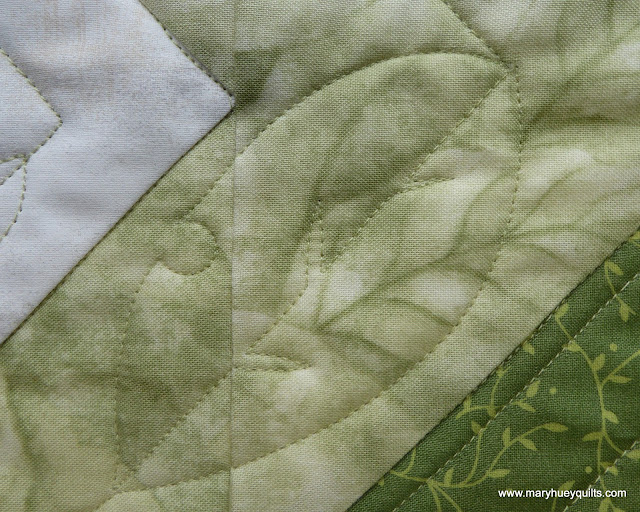The construction continues around my house but it's out of my studio and focused in the living room at the moment. A new mantel piece has been added and a unsound wall above it has been repaired. Interesting that light brown outline around the drywall patch is the "shadow" of the woodwork that must have been around the window that was there when the house was new -- no fireplace, it's an add-on!?!
Always fun to discover more of the house's history.
That gave me time to finish my preparations for the Glitter workshop I'm teaching on Thursday.
I usually spend a few days before teaching a workshop actually working on the pattern and skills being taught to get my brain totally engaged with the topic. I also decided to demonstrate a second block from Jen Kingwell's book, Quilt Lovely since everyone had to buy the book for the workshop.
Mrs. Bannister's Stars is another y-seam pattern and it's presented as a pillow (cushion) cover -- aka, small project, less likely to become a UFQ!!
I don't usually make samples in the same fabric palette as a book or pattern photo, but it was the easiest way to go this time.
I did make a diversion by using a single color group for the very pointy diamonds. This assortment of grays spans 25 years so the variation in the tones is extensive. It will be okay since none of them will touch each other in the finished piece.
There are beginning to be templates for Jen's designs in this book if you piece in Australia but all the pattern pieces needed are included on a large foldout in the book. 1/4" seam allowances need to be added if you are making templates for rotary cutting (that would be me!).
The first step is to trace the pattern pieces onto template plastic and you can see that I use a straight edge to do that. My pencil lines are EXACTLY on the pattern lines.
I also extend them beyond the ends of the piece like this -- so helpful is you want to add holes for marking dots later.
Be sure to leave plenty of space between for adding the 1/4" seams as you cut the templates.
Here's a tip from Denise at Mercantile on Main in Coshocton, Ohio!
Glue this sheet of plastic to a second sheet of plastic. An ordinary glue stick works fine.
I cover the entire pattern shape out beyond the lines to get good adhesion.
This builds up enough thickness of the template to guide the cutter blade more accurately and has eliminated ruining the templates sliver by sliver for me.
Once the glue is dry, you are ready to cut the templates out. I use a rotary cutter that is set aside for paper and plastic (aka, old blade). I find that putting a sheet of scrap paper under the template plastic makes it easier for me to see my lines when cutting the templates.
I lay a rotary ruler on top with the 1/4" line just inside the edge of my pencil line. This give me the most accurate results as I use the templates. Turn off all distractions and focus on what you are doing. This is important so that you DON'T FORGET TO ADD the 1/4" seam allowance.
Here's a cutting tip because two layers of template plastic can be hard to manage.
Typically, the angle of your cutter will be about 45 degrees as illustrated below.
But I found that by lifting the cutter to more like a 80 degree angle, I had more control of the cutter as it moved across the template plastic and keeping my index finger directly above the blade, it exerted enough pressure to cut through both layers the first time.
If you hold the cutter too flat and don't use your index finger to exert pressure where the blade make contact, it will take multiple passes of the blade and it will be difficult to achieve smooth edges.
Since I've worked for so many years with Marti Michell's templates, I have become accustomed to the "engineered" trimmed corners -- they really help with the alignment of pieces!!
So when I can figure it out, I trim the corners of the templates before using them to cut fabric.
Lay the templates out with the edges that will be sewn together matching.
Then flip them together as if you are putting right sides together for stitching and trim off the template corners that stick out. The lines extended beyond the corners help me align the pieces properly.
Time to cut the fabric!! I used another Marti Michell trick here -- use the template to measure the width of the strip. I needed three of these black strips for four blocks.
And how cool is it that when the template is twisted around, it butts right up to the last cut!?!
I've only stitched enough together to be sure my templates were accurate.
Wahoo, success!
Okay to go ahead and cut the rest of the pieces.
Those grays are going to be just fine.
Mary Huey
**There are affiliate links on my blog so I may get a commission when you use them to purchase an item that I recommend. Thanks for your support!!

















































